Collection of chile peppers
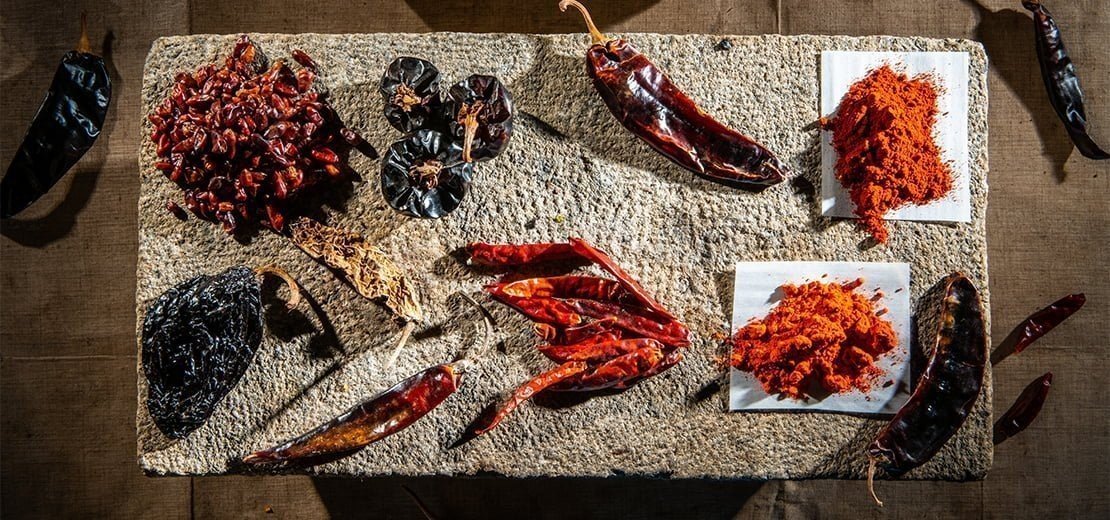
-
-

The three pimentos from Mexico
- €6.70
-
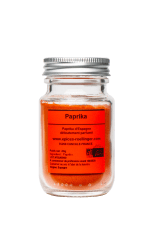
Paprika F2 ( Spain)
- €7.50
-

Smoked Pimentón de la Vera F3 (Spain)
- €6.70
-
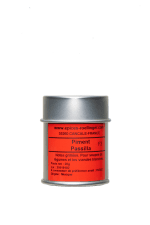
Pasilla Chile F3 (Mexico)
- €6.70
-
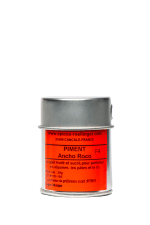
Ancho Rojo Chile F4 (Mexico)
- €6.70
-

Mulato Chile F4 (Mexico)
- €6.70
-
 Collection of chile peppersIn French, the word ‘piment’ (chile pepper) has the same Latin root as the word ‘pigment.’ There are over 400 different varieties of chile peppers, and their potency is unsurpassed in the spice world. Chile peppers’ flavors range from a fruit-like sweetness or to a forged-blade heat. Chile peppers can be used as a spice, a vegetable or a condiment in the kitchen, depending on the cuisine.
Collection of chile peppersIn French, the word ‘piment’ (chile pepper) has the same Latin root as the word ‘pigment.’ There are over 400 different varieties of chile peppers, and their potency is unsurpassed in the spice world. Chile peppers’ flavors range from a fruit-like sweetness or to a forged-blade heat. Chile peppers can be used as a spice, a vegetable or a condiment in the kitchen, depending on the cuisine.Chile peppers’ aromas and flavor profiles vary greatly from one varietal to another. There’s a chile pepper for every taste; you just have to find the right one for you and your cooking style. Our collection includes chile peppers from Mexico, Spain, India, and France.
-
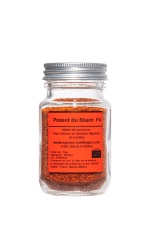
Piment du Béarn F4 (Béarn Chile Pepper , France)
- €13.20
-

Piment du Béarn fumé au bois de laurier F4 (Bay Laurel-Smoked Béarn Chile Pepper , France)
- €13.20
-

Guajillo Chile F5 (Mexico)
- €6.70
-
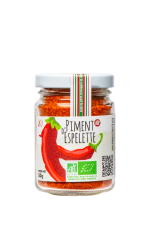
Piment d’Espelette F5 (France, Basque Country AOP)
- €10.40
-

Chile Mirasol (Mexico) F5,5
- €6.70
-

Chipotle Meco Chile F5.5 (Mexico)
- €6.70
-

Cascabel Chile F6 (Mexico)
- €6.70
-

Puya Chile F6,5 (Mexico)
- €6.70
-
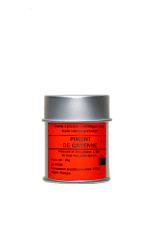
Cayenne Chile Pepper F7 ( Spain)
- €6.70
-

Piquin Chile powder F8 (Mexico)
- €6.70
-

Piquin Chile whole F8 ( Mexico)
- €6.70
-
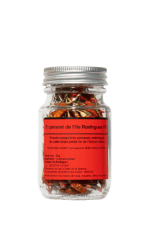
Rodrigues Island Ti Piment F8
- €7.20
-

Chile from India F9
- €6.70
-
Collection of chile peppers
In French, the word ‘piment’ (chile pepper) has the same Latin root as the word ‘pigment.’ There are over 400 different varieties of chile peppers, and their potency is unsurpassed in the spice world. Chile peppers’ flavors range from a fruit-like sweetness or to a forged-blade heat. Chile peppers can be used as a spice, a vegetable or a condiment in the kitchen, depending on the cuisine.
Chile peppers’ aromas and flavor profiles vary greatly from one varietal to another. There’s a chile pepper for every taste; you just have to find the right one for you and your cooking style. Our collection includes chile peppers from Mexico, Spain, India, and France.
Story
Chile peppers were consumed for thousands of years by the Mayan, Aztec, and Inca civilizations in Mexico and South America. In Mexico, traces of chile pepper cultivation date back to 7000 BC. Chile peppers are among the first plants domesticated and cultivated by mankind.
The history of chile peppers in the rest of the world began much more recently.
The hundreds of modern varieties all trace their origins back to central America. As chile pepper varieties made their way around the globe, they became an essential element in tropical cuisines, from Cayenne and Mexico to Asia, Africa, and the Caribbean.
In 1493, Columbus brought the first chile peppers—or ‘devil’s spice’—back to Queen Isabella of Spain. From there, chiles traveled to Greece and Turkey, then Hungary.
As early as the 16th century, Portuguese ships introduced chile peppers to India, which was ultimately a gateway to Southeast China and Asia. Chiles which was traded by the Magellan companies, were integrated more rapidly into Asian cuisines than European.
Until the 19th century, chile peppers were believed to be indigenous to the East Indies. Even today, many still believe that chile peppers originated in India.
Botany
Chile peppers are members of the nightshade family. Their genus, capsicum, includes both chile and bell peppers. The botanical differences between the two are slim. Hot chile peppers tend to be used as a spice while bell peppers are cooked as vegetables.
Pepper plants grow as small herbaceous plants or bushes. Both edible and ornamental peppers start out green and can mature to yellow or red or yellow when fully ripe.
Most chile and bell pepper varietals in the world belong to the C. annuum species native to Central America. C. frutescens et C. chinense are two other cultivated pepper species.
China is the number one fresh chile pepper producer in the world, with Mexico and Turkey trailing behind in second and third place. Spain is the European country with the highest production.
Scoville Heat Unit
Capsaicin, is the molecule in chile peppers, that gives them their fiery heat.
The Scoville scale ranks the heat and pungency of chile peppers . It ranges from 1 to 10 according to a chile pepper’s capsaicin levels.
The empirical scale was invented in 1912 to measure capsaicin levels in chile peppers. Levels are rated from 1 to 10 or from 0 to 15 million units. Even though chile pepper experts now question the reliability of the Scoville scale, it provides a basis for determining a chile pepper’s heat levels.